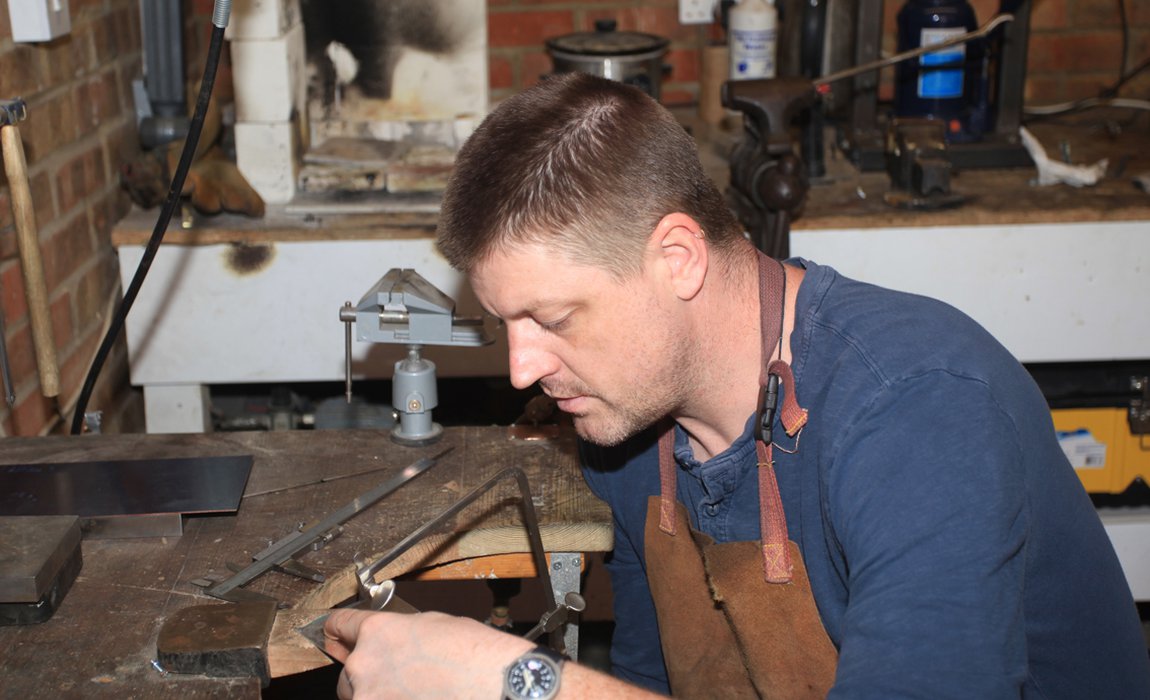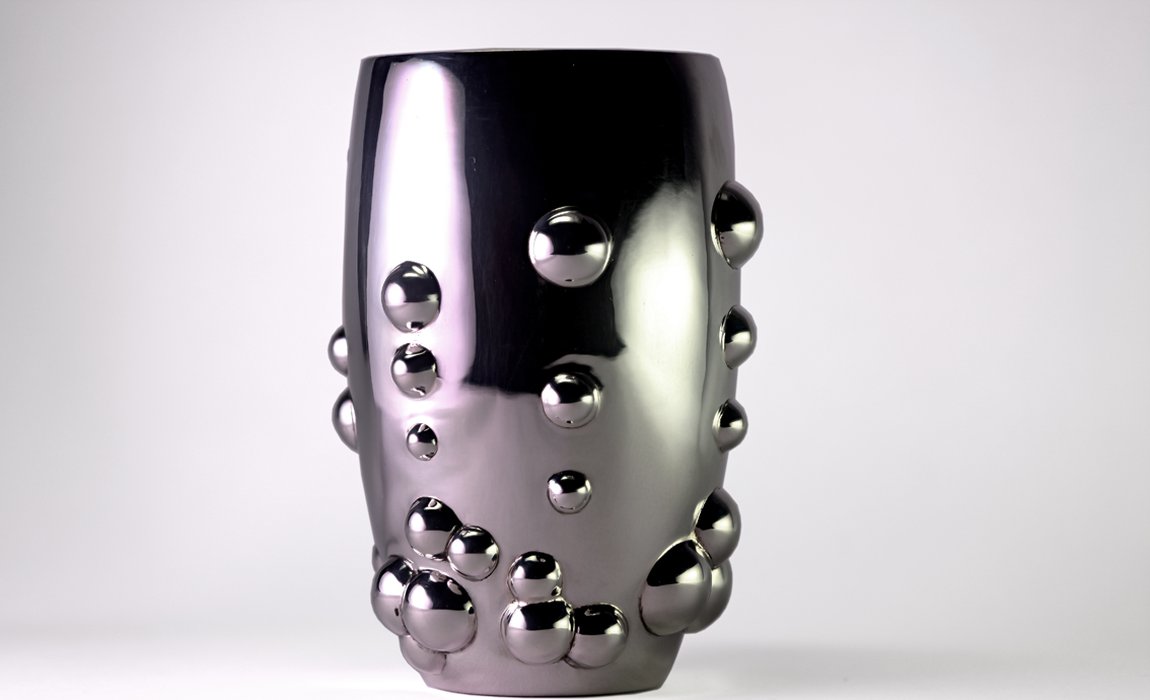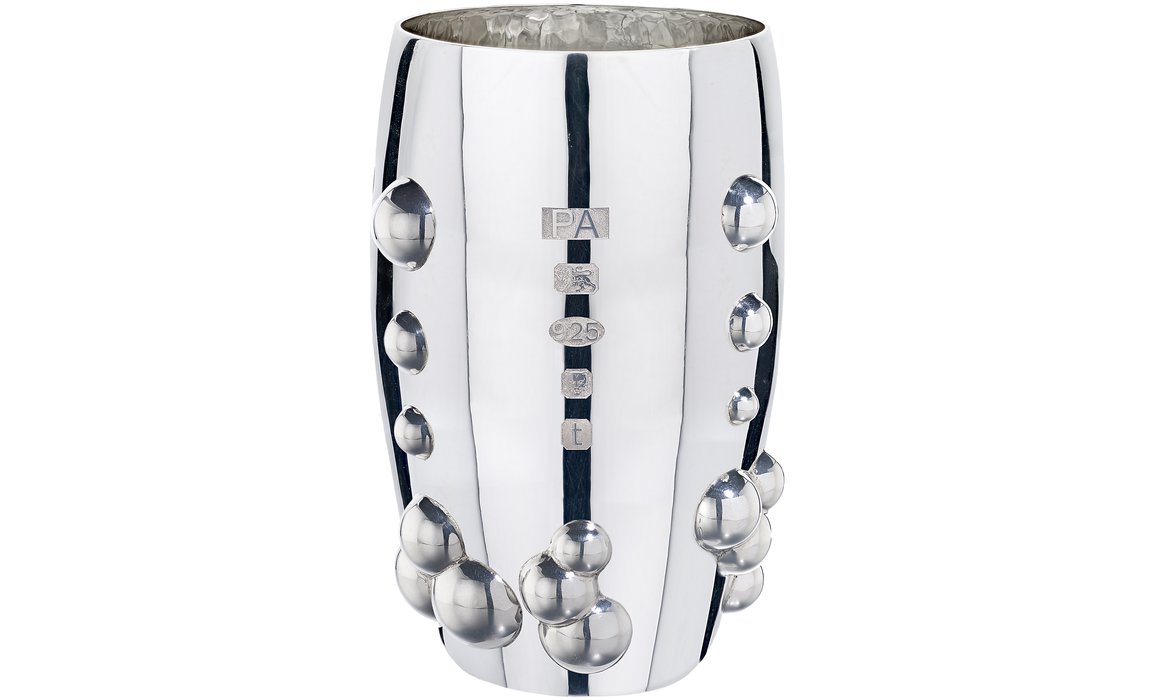Paul Alexander Smith on making the 'Effervescent Beaker'
This week we chatted to Mokume-Gane practitioner Paul Smith, a fresh talent in the world of silversmithing and the maker of the stunning Effervescent Beaker in our Made for the Table exhibition.
What inspired you to become a silversmith?
Initially, I just was messing around with metal, making jewellery, and it became a passion. I thought it would make a nice career so started a BA, and that introduced me to working on a larger scale. I realised then that it was silversmithing that I enjoyed most of all, and though I still make jewellery, the joy lies for me in larger scale projects.
Would you say that you have a particular design style?
Being a recent graduate, I would say I’m still refining my design style, though my normal practice is in the technique of Mokume-Gane. I tend to make life harder for myself as I look towards ceramics for inspiration and try to emulate ceramics in metal, and the botryoid vessels that I’ve made are quite complex to create, matching curve for curve.

Would you describe your influences as more contemporary, or historic?
My style is definitely more contemporary, but I think you do need an understanding of historical craft to ground your work. To create, you need to know what’s been done before in order to go forwards.
Does the beaker for Made for the Table differ from your usual work?
Specialising in the Mokume-Gane technique, my work is very much grounded in working with mixed metals, so my beaker differs in that it’s a completely silver piece. I work in pattern and form typically, but if you’re using silver alone the the focus is more on form. So in terms of material it is different, but otherwise it’s quite in-keeping with my usual style.


What’s your favourite thing about creating a piece for commission?
The diversity. Every commission is different. Though clients come to you because they like your work, often in order to satisfy them you need to incorporate their ideas into your own to truly create something that they feel attached to. That’s what makes silversmithing so interesting, and keeps it fresh - every project you undertake, especially with commissions, you factor in each client’s point of view, and that pushes you out of your comfort zone.
What are the biggest challenges involved?
Being out of your comfort zone, and attempting things for the first time, always involves an element of risk. With the beaker for example, you’re given a starting point of a spun silver beaker, so you really don’t want to do anything to mess that up!
When you’re designing something, there is always the possibility that you won’t be able to make it come to fruition. Timing can be very tricky too. You need a balance - you can’t make your initial design so ambitious and fantastic that it’s unachievable within the time limit, but you also don’t want to make something plain that nobody's going to be particularly interested in.
What are your favourite things about being a maker in general?
The creativity, being able to let your imagination run wild. And the process of problem solving, of finding a way to get from A to B in order to create something. Working with metal is great, and you develop an affinity for it through doing it, but it’s the creating itself that I love.
Are there any other makers whose work you admire?
There are hundreds! Off the top of my head, Alistair McCallum’s ideas on Mokume-Gane, moving the technique forward beyond the traditional patterns, has influenced me a lot. As has Kevin Grey, who uses TIG welding to create forms, and Junko Mori, who welds segmented, smaller elements to create fantastic complete pieces.
When designing something for use, like a beaker or tableware, which is your priority - functionality or aesthetics? How do you balance the two?
For me, aesthetics have the edge. A lot of the pieces we create as silversmiths, though they have a function and are often perfectly ultiarian and capable of performing that function, I don’t think they’re destined to be used every day. The nature of something being made from precious metal moves it above the commonplace, makes it an object more to be admired than used or only to be used in a specific way, on special occasions. The material almost transcends the functionality of the object. This applies to silver particularly. You can’t just stick silver in the dishwasher, so it’s not functional in the everyday sense; the context is always of something a little more special, a little more ceremonial.
 Image copyright Simon B Armitt 2018
Image copyright Simon B Armitt 2018

How have your experiences with the Goldsmiths’ Centre impacted your career?
The Goldsmiths' Centre has been pivotal, especially at this early stage in my career. As an undergraduate I took the Centre’s undergraduate silversmithing course, and did the graduate internship too, and along the way you meet a lot of significant people in the industry that you wouldn’t encounter otherwise, whilst being taught by master craftspeople.
Do you have any advice for other aspiring makers?
Keep going, you can only get better. You can't get any worse!